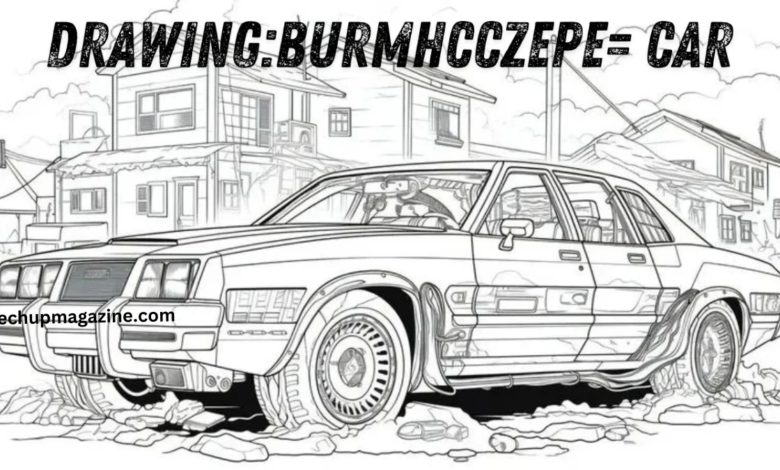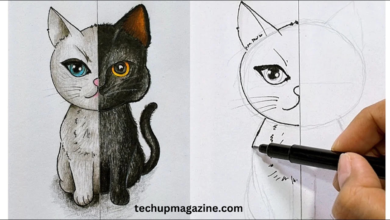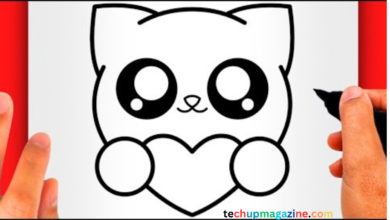Mastering the drawing:burmhcczepe= car: A Comprehensive Guide

Introduction to drawing:burmhcczepe= car
drawing:burmhcczepe= car can be a highly rewarding experience, whether you’re an aspiring artist, a car enthusiast, or just looking to improve your skills. The sleek curves, dynamic shapes, and intricate details of a car make it an exciting subject to capture on paper. However, without the right guidance, it can seem daunting at first drawing:burmhcczepe= car.
Whether you’re aiming to sketch a classic vintage car or a futuristic sports vehicle, understanding the fundamentals of car drawing is essential. In this guide, we’ll walk through everything you need to know about how to draw a car, step by step, so that by the end, you’ll feel confident tackling this project with precision and creativity drawing:burmhcczepe= car.
Understanding Car Anatomy

drawing:burmhcczepe= car Before diving into sketching, it’s important to understand the anatomy of a car. This isn’t just about knowing what a car looks like, but rather about understanding how the various parts come together to form the overall structure. Cars are made up of key elements that define their appearance: the body, wheels, windows, and interior detailing drawing:burmhcczepe= car.
By breaking down each part and understanding its proportions and function, you’ll have a better grasp of how to draw them accurately. When you understand the car’s anatomy, you can draw different angles, perspectives, and even different models with ease. Familiarizing yourself with this structure will help you bring out the realism in your drawing:burmhcczepe= car.
Choosing the Right Reference
Every great drawing starts with a reference. Even if you feel comfortable drawing from memory, using a photo or a live model of the car you want to draw will ensure that your proportions are correct. It also helps you capture the finer details that you may not remember off the top of your head drawing:burmhcczepe= car.
A good reference should give you a clear view of the car from different angles. Start by finding an image of the car in a simple, neutral position. Side views or front views are ideal for beginners, as they help you focus on proportions without worrying about perspective too much. Once you have mastered these views, you can move on to more dynamic angles, such as three-quarter views or top-down perspectives drawing:burmhcczepe= car.
Basic Shapes and Proportions
The first step in drawing any object, including cars, is to break it down into basic shapes. Most cars can be simplified into rectangles, ovals, and circles. The body of the car is usually a combination of rectangles and curved shapes, while the wheels are perfect circles. Start by drawing these basic shapes lightly, ensuring that you get the general proportions of the car right drawing:burmhcczepe= car.
This initial stage doesn’t need to be precise—it’s more about laying down a foundation. The wheels, for example, should be aligned properly to avoid making the car look distorted. Think about how each part relates to the others in size. With practice, you’ll develop an eye for proportion and spacing drawing:burmhcczepe= car.
Outlining the Car’s Body
Once you have your basic shapes in place, the next step is to outline the body of the car. Pay close attention to the curvature of the car’s frame. Most cars have smooth, flowing lines that define their overall aesthetic. Use long, sweeping strokes to capture these lines drawing:burmhcczepe= car.
The body of the car can be tricky because it involves complex shapes that must look cohesive. Pay attention to how the roof transitions into the hood, and how the side panels connect with the bumpers. Drawing the frame lightly at first allows you to make corrections without ruining the overall structure drawing:burmhcczepe= car.
Adding Detail to the Wheels
Wheels can make or break a car drawing. They’re not only functional but also a focal point in many vehicle designs. Start by refining the circles you drew earlier, making sure they are evenly sized and placed. From there, you can add the rims and spokes, which give the wheels a more realistic appearance drawing:burmhcczepe= car.
The tires should have some thickness to them—don’t just draw a single line around the wheels. Adding shading to the rubber helps create depth, making the wheels look more three-dimensional. If the car you’re drawing has detailed rims, spend some extra time getting these elements right, as they can really elevate the realism of your drawing:burmhcczepe= car.
Drawing Windows and Windshields
Windows and windshields are another key part of any car drawing. They add transparency and depth to the vehicle, giving it a more realistic look. Start by sketching the outline of the windows, keeping in mind the shape and size relative to the body of the car.
Once the outline is done, you can add the details inside the windows. This might include reflections, the edges of the windshield, and interior elements like seats or the steering wheel. While drawing reflections may seem complicated, it’s all about using light shading to suggest the glass’s glossy surface.
Shading and Texturing the Car Body
Shading is where your car drawing really starts to come to life. It adds depth, dimension, and realism. Cars are reflective, so think about where the light source is coming from as you start shading. Areas that are exposed to light will remain lighter, while areas that are in shadow should be darker.
Use smooth, even strokes when shading the car’s body. If the surface is shiny, like on a sports car, you’ll want to leave some areas almost entirely unshaded to create a sense of gloss. Texturing can also be added to give the car a more realistic finish, especially around metallic or rubber areas.
Detailing the Lights and Bumpers
Car lights and bumpers add character and realism to your drawing. For the headlights, start by sketching their basic shape. Modern car designs often feature sleek, angular headlights, while older cars have more rounded, bulbous lights. Add the inner details of the lights, like reflectors or the bulb, to make them look authentic.
The bumper should follow the curve of the car’s body, and it often has a subtle shine or reflection depending on the car’s material. Adding these small details can significantly elevate the quality of your drawing, making the car look more lifelike.
Adding the Finishing Touches
Once you’ve added all the major details, it’s time to step back and assess your drawing. Are the proportions correct? Does the car look three-dimensional? If you see any areas that need refinement, now’s the time to fix them. Use an eraser to clean up stray lines and sharpen the edges of the car.
Adding some finishing touches, such as reflections on the windows, subtle texture on the tires, or additional shading, will give your drawing a professional look. Don’t forget to sign your artwork—it’s a reflection of the hard work and creativity you’ve put into the piece!
Experimenting with Different Styles
Once you’ve mastered the basics of drawing a car, you can start experimenting with different styles. You may want to try drawing cars in a cartoonish or exaggerated style, or you might lean towards hyper-realism, where every detail is painstakingly accurate. The possibilities are endless, and drawing cars allows you to explore your creativity while improving your technical skills.
Practice Makes Perfect
Like any skill, drawing cars takes practice. Don’t be discouraged if your first few attempts don’t come out exactly as you imagined. Keep refining your technique, focusing on the elements you find most challenging. Over time, you’ll notice improvements in your accuracy, speed, and creativity. Drawing cars can be a fun and satisfying hobby, and with the right dedication, you can create amazing pieces of automotive art.
Conclusion: Your Journey to Drawing Cars Like a Pro
Drawing a car is much more than just putting lines on paper—it’s about understanding form, proportion, perspective, and detail. From choosing the right reference to adding those final details, every step of the process is a learning opportunity. As you practice and refine your skills, you’ll discover your own unique style and approach to car drawing. Whether you’re aiming for photorealism or a more stylized look, the key is persistence and enjoyment.
So, grab your sketchpad and pencil, and start your journey to mastering the art of drawing cars today!



